Loading
Journal of AIDS and HIV Treatment
ISSN: 2688-7436
All Articles
Detection of Undiagnosed Elevated Cardiovascular Risk Biomarkers among HIV-Positive Patients on Antiretroviral Therapy (ART) in Kigali-City, Rwanda
Marcus Bushaku, Caleb Nyamwange, Arthur Kwena, Marc Twagirumukiza, Jean Nepo Utumatwishima, Regine Mugeni, Victor Davila-Roman, Aurore Nishimwe, Kenneth Schectman, W Todd Cade, Dominic Reeds, Eugene Mutimura
Similar to other African countries, life expectancy of people living with HIV infection has improved due to access to antiretroviral therapy (ART) in Rwanda. However, both HIV infection and use of ART are associated with cardiovascular disease (CVD) risks, due to adverse changes in some biomarkers, causing dyslipidemia and other metabolic imbalances. Biomarkers for CVD risk in HIV-infected individuals taking ART, has not been well characterized in Rwanda.
J AIDS HIV Treat, 2023, Volume Volume 5, Issue Issue 1 | DOI: 10.33696/AIDS.5.042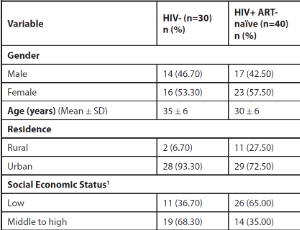
Pre-exposure Prophylaxis (PrEP) for HIV Infection and New Sexually Transmitted Infections: A Win-Win Opportunity?
François Aubin, Clélia Vanhaecke, Christine Drobacheff, Fabien Pelletier, Manuelle Viguier
Pre-exposure prophylaxis (PrEP) significantly reduces the risk of HIV acquisition in patients exposed to a high risk of infection such as men who have sex with men (MSM), heterosexual couples, and people who inject drugs.
J AIDS HIV Treat, 2021, Volume Volume 3, Issue Issue 1, p1-3 | DOI: 10.33696/AIDS.3.011
CCR5 Inhibitors and HIV-1 Infection
Olga S. Latinovic, Marvin Reitz, Alonso Heredia
Cellular components are attractive targets for antiviral therapy because they do not mutate as readily as do viral proteins do [1-3]. The identification of CCR5 as an HIV-1 coreceptor [4-7], facilitated by the discovery of the antiviral activities of CCR5 ligand ?-chemokines [8], resulted in the development of new viral entry inhibitors to block CCR5 binding, including both- small molecules and CCR5 antibodies
J AIDS HIV Treat, 2019, Volume Volume 1, Issue Issue 1, p1-5 | DOI: 10.33696/AIDS.1.001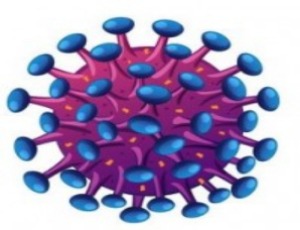
Incidence of Nephrotoxicity among People Living with Human Immunodeficiency Virus on Tenofovir Treatment in a Tertiary Hospital in the Philippines
Marja Bernardo-Buensalido, Cybele Lara R. Abad
Tenofovir disoproxil fumarate (TDF) is one of the main antiretroviral drugs of people living with human immunodeficiency virus (PLWHIV). Despite its efficacy and tolerability, there is conflicting evidence regarding TDF-associated nephrotoxicity, which is proposed to cause injury by accumulation of tenofovir (TFV) within proximal tubular cells leading to mitochondrial injury and tissue hypoxia.
J AIDS HIV Treat, 2022, Volume Volume 4, Issue Issue 1, p1-5 | DOI: 10.33696/AIDS.4.025
- Abstract |
- Full Text |
- Cite |
- Supplementary File
Plasma Levels of Secretory Calreticulin among HIV Infected Patients in Bauchi State
Ahmed Musab, Ibrahim Yazid Gobir, LAWAL ROGO, Auwal Idris Kabuga, Yahaya Zakari
Human immunodeficiency virus (HIV) is a lentivirus that causes HIV infection and over time acquired immunodeficiency syndrome. The objective was to evaluate plasma levels of Calreticulin (CALR) in HIV positive and negative individuals.
J AIDS HIV Treat, 2023, Volume Volume 5, Issue Issue 1, p1-8 | DOI: 10.33696/AIDS.5.040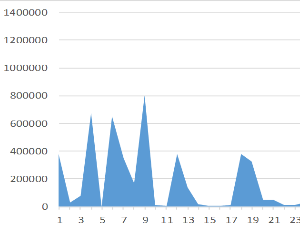
Beyond the Numbers: Weight Gain Risk Factors, Implications, and Interventions among Individuals with HIV
Yesha S. Patel, Carlos D. Malvestutto
Advancements in antiretroviral therapy (ART) have significantly improved life expectancy, leading to an increased prevalence of older adults with HIV. This population may face challenges related to age-related comorbidities in addition to HIV and possibly antiretroviral therapy-related comorbidities. Among those, weight gain has emerged as an increasingly recognized problem raising clinical concern.
J AIDS HIV Treat, 2024, Volume Volume 6, Issue Issue 1, p1-10 | DOI: 10.33696/AIDS.6.047
Patient-Reported Health Outcomes among HIV-Infected Patients on Antiretroviral Therapy in a Tertiary Hospital in Dar Es Salaam, Tanzania: A Cross Sectional Study
Elisha Fred Osati, Grace Ambrose Shayo, Raphael Zozimus Sangeda, Joan Rugemalila
The use of antiretroviral therapy (ART) has resulted into HIV-infected patients living longer than it was the case in the pre-ART era [1]. Surviving patients are concerned not only with the treatment ability to extend their lives but also that their quality of life is improved on the course.
J AIDS HIV Treat, 2020, Volume Volume 2, Issue Issue 1, p1-11 | DOI: 10.33696//AIDS.2.001
Perceptions and Knowledge of HIV/AIDS Among Black Women: An Exploratory Study
Erica Campbell, Nizejai Anderson
Black women in the United States face disproportionate rates of HIV/AIDS, with higher new infection rates and poorer health outcomes compared to other racial and gender groups. This study seeks to explore the perceptions and knowledge surrounding HIV/AIDS among Black women, to contribute to social work and public health knowledge. By identifying gaps in awareness and understanding of the distinct challenges Black women face regarding HIV/AIDS, this study provides valuable insight to inform the development of targeted interventions and policies to mitigate the impact of HIV/AIDS.
J AIDS HIV Treat, 2025, Volume Volume 7, Issue Issue 1, p1-12 | DOI: 10.33696/AIDS.7.055
Remembering David Katzenstein (1952-2021)
Alan M McGregor
I first met David shortly after arriving to work in Zimbabwe in 2015. He became a colleague and friend and we continued to collaborate, after my return to the UK in 2019, and indeed until his death in Harare, Zimbabwe, from the consequences of Covid-19 infection, on January 24th, 2021, with several manuscripts of this very productive collaboration, currently still in press.
J AIDS HIV Treat, 2021, Volume Volume 3, Issue Issue 1, p3-12 | DOI: 10.33696/AIDS.3.013
From Silos to Solidarity: Case Study of a Patient-Centered, Integrative Approach to Opioid Tapering and Chronic Pain Mitigation in a Multidisciplinary AIDS Clinic
Sara D. Pullen, Marconi VC, del Rio C, Head C, Nimmo M, O’Neil J, Ziebart M
Chronic pain, defined as pain lasting longer than three months, is a significant public health burden and has been associated with depression, anxiety, poor quality of life and opioid use disorder (OUD).
J AIDS HIV Treat, 2021, Volume Volume 3, Issue Issue 1, p4-11 | DOI: 10.33696/AIDS.3.012
The Impact of Marginalization on the Continuum of Care Treatment Model on African American Communities in the Southern United States
Jill Rowe
Recently, I was asked to speak at the National Academy of Public Administration (NAPA) Conference about my experiences serving as an ethnographic consultant on the National HIV Behavioral Surveillance System (NHBS1 ) Study.
J AIDS HIV Treat, 2019, Volume Volume 1, Issue Issue 1, p6-7 | DOI: 10.33696/AIDS.1.002
Pregnancy Outcomes in Pregnant Women with HIV on Tenofovir Disoproxil Fumarate (TDF) Compared to Tenofovir Alafenamide (TAF)
Matthew A. Thimm, Alison Livingston, Rosemary Ramroop, Ahizechukwu C. Eke
HIV infection in pregnancy continues to be of significant clinical and public health importance [1,2]. The current statistics published by the World Health Organization (WHO) demonstrate that 38 million people are living with HIV in 2019, and 1.1 million (85%) pregnant women living with HIV received antiretroviral therapy (ARVs) during pregnancy and postpartum.
J AIDS HIV Treat, 2022, Volume Volume 4, Issue Issue 1, p6-13 | DOI: 10.33696/AIDS.4.026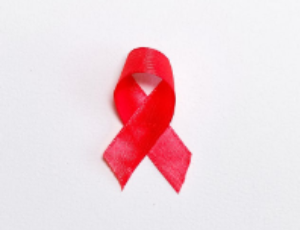
Recent Progress in Preclinical HIV-1 Vaccine Research
Zizhang Sheng, Lawrence Shapiro
Since isolation in humans in 1983 [1,2], HIV-1 has developed into a global pandemic. But an effective HIV-1 vaccine has not been succeeded despite multiple human vaccine trials performed [3,4]. Challenges to an effective vaccine arise from intrinsic virological and immunological features of HIV-1 [3-8].
J AIDS HIV Treat, 2019, Volume Volume 1, Issue Issue 1, p8-12 | DOI: 10.33696/AIDS.1.003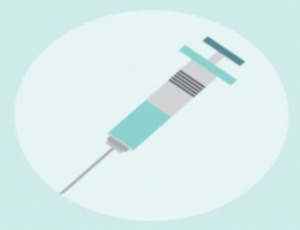
Mental Health and Cognitive Care for Successful Aging with HIV
Paroma Mitra
Globally, an estimated 4.2 million people above the age of 50 now have diagnosis of HIV (Human Immunodeficiency Virus) infection. Patients with HIV can now survive well into old age. Aging with HIV has been associated with medical illness however neuropsychiatric symptoms including cognitive decline and behavioral dysregulation has been directly associated with aging and having HIV.
J AIDS HIV Treat, 2023, Volume Volume 5, Issue Issue 1, p9-12 | DOI: 10.33696/AIDS.5.041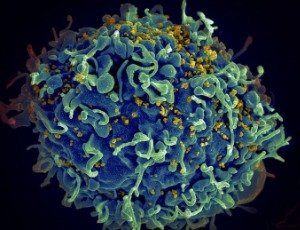
Potential Advantages of a Well-balanced Nutrition Regimen for People Living with Human Immunodeficiency Virus Type -1
Daniele Basta, Olga S. Latinovic, Yutaka Tagaya, Giovannino Silvestri
This review underscores the important role of nutrition in enhancing the management of Human Immunodeficiency Virus type 1 (HIV-1). Highlighting the efficacy of dietary interventions, including, the importance of omega-3 fatty acids, vitamins D and B-12, and the Mediterranean diet, we delineate how these beneficial nutritional strategies can improve the effectiveness of combined antiretroviral therapy (cART), mitigate its side effects, and ameliorate metabolic disorders in people living with HIV-1 (PLWH).
J AIDS HIV Treat, 2024, Volume Volume 6, Issue Issue 1, p11-27 | DOI: 10.33696/AIDS.6.048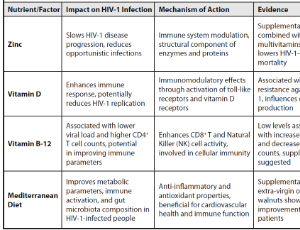
Black Women's Contribution to the HIV/AIDS Fight
Raphael M. Mutepa, Samson Chama
After thousands of years of gender conflicts, the world now stands at the beginning of the feminine era, when women will rise to their proper standing, and the entire world will experience the harmony between men and women.
J AIDS HIV Treat, 2020, Volume Volume 2, Issue Issue 1, p12-22 | DOI: 10.33696/AIDS.2.002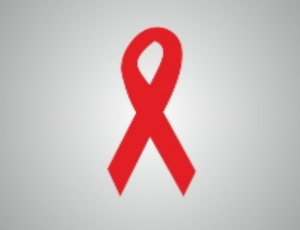
HIV RNA Load and Antiretroviral Drug Resistance of HIV-1 Strains in Chad on Dried Blood Spots: A Pilot Study
Nadia Djimera, Abdelaye Keita, Thomas Bourlet, Laurent Andreoletti
In low-income Sub-Saharan Africa countries, peripheral blood HIV RNA levels monitoring twice a year in antiretroviral (ARV) drugs treated patient is a major WHO recommendation since 2013.
J AIDS HIV Treat, 2021, Volume Volume 3, Issue Issue 1, p13-16 | DOI: 10.33696/AIDS.3.014
Primary Lymph Node Kaposi's Sarcoma in Two HIV Positive Patients Presenting with Generalized Lymphadenopathy and Pancytopenia in a Third Level Hospital in Guatemala
Pablo Pérez Pinetta, Johanna Meléndez
We present two unique cases in which two HIV positive patients with generalized lymphadenopathy and pancytopenia without any skin lesions were diagnosed with primary lymph node Kaposi´s Sarcoma after excisional biopsy of an inguinal lymph node.
J AIDS HIV Treat, 2019, Volume Volume 1, Issue Issue 1, p13-18 | DOI: 10.33696/AIDS.1.004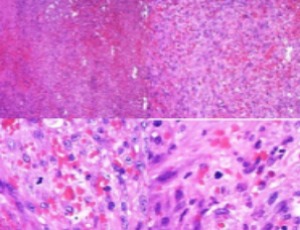
Disclosing Sexual Partner's HIV/AIDS Status before Sexual Activity: A Cross-sectional Study on Factors Affecting Confidence
Mbwiga Sote Aloni, Orestes Silverius Kapinga
Background: Human immunodeficiency virus (HIV) can be transmitted through the exchange of body fluids with persons who are HIV positive. For the sake of prevention and care, disclosing the partner’s HIV status is crucial. Most sexual partners face difficulties in inquiring about the HIV status of their sexual partners. Partner’s negative reaction, stigma, and fear of judgment deter the sexual partners discussions on HIV status. The study assessed factors affecting confidence in enquiring about the HIV/AIDS status before sexual activity.
J AIDS HIV Treat, 2025, Volume Volume 7, Issue Issue 1, p13-21 | DOI: 10.33696/AIDS.7.056
Known and New Routes to Neutralize HIV-1 with Camelid Single Chain Antibody Fragments
C. Theo Verrips, Gerben ten Hag, Ursula Dietrich, Harold Marcotte
In spite of all efforts to reduce transmission of HIV-1, 1.7 million persons were infected in 2019 worldwide. Whereas in the developed countries the COVID-19 pandemic is reasonably controlled within 2 years because of the fast and successful development of vaccines, nearly 40 years after the first reported cases of AIDS due to HIV-1 and in spite of tremendous efforts to develop vaccines against HIV-1, there are still no vaccines against the virus.
J AIDS HIV Treat, 2022, Volume Volume 4, Issue Issue 1, p14-21 | DOI: 10.33696/AIDS.4.027
- Abstract |
- Full Text |
- Cite |
- Supplementary File
Dihydropteroate Synthase (DHPS) Gene Mutations in Human Pneumocystosis
Bijay Ranjan Mirdha
Extraordinary journey began on June 18, 1981, the Centre for Disease Control and Prevention (CDC) in United States reported a cluster of Pneumocystis carinii pneumonia (now known as Pneumocystis jirovecii (P. jirovecii) pneumonia or Pneumocystis pneumonia in five gay men in Los Angeles.
J AIDS HIV Treat, 2021, Volume Volume 3, Issue Issue 1, p17-20 | DOI: 10.33696/AIDS.3.015
Anti-HIV-1 Activity of Crocodylus mindorensis (Philippine Crocodile) Serum in Cell-free and Cell-associated Virus Interactions to Human Peripheral Blood Mononuclear Cells
Hinay, Alfredo Jr A, Cadotdot, Nelyn Mae T, Tablizo, Marilou V
Highly-Active Antiretroviral Therapy (HAART) is the recommended treatment and management strategy for HIV infection. Although the existing antiretroviral drugs are indispensably significant in improving the quality and extending the lives of HIV/ AIDS individuals, the drugs still have many limitations including development of resistance, production of toxicity, and their limited availability.
J AIDS HIV Treat, 2019, Volume Volume 1, Issue Issue 1, p19-24 | DOI: 10.33696/AIDS.1.005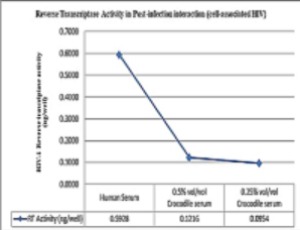
Commentary on Lahiri et al. Weight and Body Mass Index Change After Switching to Integrase Inhibitors or Tenofovir Alafenamide Among Women Living with HIV
Francesca Macaluso, Deborah R. Gustafson
Among women living with HIV (WLWH), increases in body weight and body mass index (BMI, kg/m2) have been observed after switching to the antiretroviral therapies (ART) - Integrase Inhibitors (INSTI) and/or Tenofovir Alafenamide (TAF).
J AIDS HIV Treat, 2021, Volume Volume 3, Issue Issue 2, p21-23 | DOI: 10.33696/AIDS.3.016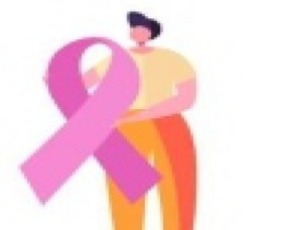
Determination of Anthropometric and Immune Inflammatory Responses in Patients on Dolutegravir Based Antiretroviral Therapy at University of Nigeria Teaching Hospital Ituku-Ozalla
Chima O. Onwuka-Kalu, Ejike F. Chukwurah
Dolutegravir, an integrase strand transfer inhibitor has been found to affect anthropometric indices. A total of 40 subjects comprising 19 male and 21 female were recruited for the study and apparently healthy sex and age matched individuals who tested sero-negative to HIV screening were used as controls. Standard weighing scale and measuring tape were used to determine body mass index (BMI) and Waist-to-Hip Ratio (WHR). Blood samples were collected and analyzed for pro inflammatory cytokines markers, specifically IL6 and TNF-α.
J AIDS HIV Treat, 2025, Volume Volume 7, Issue Issue 1, p22-26 | DOI: 10.33696/AIDS.7.057
Tenofovir Alafenamide, Emtricitabine, and Bictegravir in Switch Strategy for HIV-1 Adult Patients Due to Previous Renal Impairment Induced by Tenofovir Disoproxil Fumarate
R Correia de Abreu, C Batista, S Caetano, Isabel Neves
Non-AIDS comorbidities, metabolic, renal and bone toxicities associated to combined antiretroviral therapy (cART), namely NRTIs, led to dual therapy (NUC sparing regimens). Tenofovir Alafenamide Fumarate (TAF) demonstrated improved renal and bone safety profile over TDF even with mild to moderate renal impairment.
J AIDS HIV Treat, 2022, Volume Volume 4, Issue Issue 1, p22-29 | DOI: 10.33696/AIDS.4.028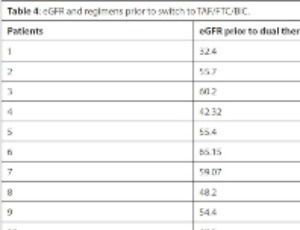
Death and Transferred Out as Competing Event for Lost to Follow-up among HIV-positive Adults on ART, in Eastern Ethiopia Governmental Hospitals from January 2015 to December 2021; (Multicenter Competing Risk Regression Analysis)
Girum Shibeshi Argaw, Kassahun Alemu Gelaye, Ayenew Molla Lakew, Yazachew Moges Chekol, Fantu Mamo Aragaw
Lost to follow-up (LTFU) among patients on antiretroviral therapy accounts for the most of all attrition. In Sub-Saharan Africa,there is a concern regarding high rates of LTFU and early mortality in antiretroviral therapy programs. Mortality and transferred out are the potential competing events for LTFU. Ignoring these events may give an invalid estimate by overestimating the probability of the occurrence of LTFU.
J AIDS HIV Treat, 2023, Volume Volume 5, Issue Issue 1, p22-33 | DOI: 10.33696/AIDS.5.043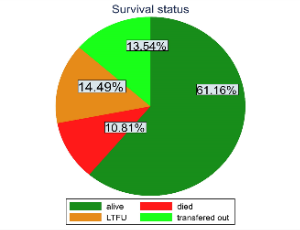
Use of Humanized Mouse Models for Studying HIV-1 Infection, Pathogenesis and Persistence
Matthew Weichseldorfer, Alonso Heredia, Marvin Reitz, Joseph L. Bryant,
Different humanized mouse models have been introduced to enable HIV-1 research in vivo, which has been made possible by the development of immunodeficient mouse strains.
J AIDS HIV Treat, 2020, Volume Volume 2, Issue Issue 1, p23-29 | DOI: 10.33696/AIDS.2.003
Commentary – HIV-Induced Extracranial Carotid Ectasia and Stroke
Rakhee Lalla, Prashant Raghavan, John W. Cole
HIV is a known risk factor for both ischemic and hemorrhagic stroke. Even with the widespread use of antiretroviral therapy, stroke incidence is higher in patients with HIV compared to non-HIV control subjects.
J AIDS HIV Treat, 2021, Volume Volume 3, Issue Issue 2, p24-26 | DOI: 10.33696/AIDS.3.017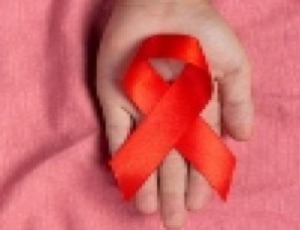
Assessment of Attitudes toward HIV and AIDS among Undergraduate Students at a Historically Black University
Prince Andrew, Azad R. Bhuiyan, Anthony Mawson, Mohammad Shahbazi
HIV is no longer only a public health challenge, but also a global threat with a devastating negative impact that has claimed over 35 million lives globally. In 2017, about 36.9 million people live with HIV, and 1.8 million people becoming newly infected with the disease globally [1].
J AIDS HIV Treat, 2019, Volume Volume 1, Issue Issue 2, p25-32 | DOI: 10.33696/AIDS.1.006
Pre-Exposure Prophylaxis (PrEP) Safety and Tolerability in Individuals ≥ 45 Years Old
Emily Comstock, Camilia James, Robert Hegarty, Yolanda Flores, Anthony Amoroso, Rohit Talwani, Eleanor Wilson
Pre-exposure prophylaxis (PrEP) is a combination of antiretroviral medications, most commonly prescribed as two co-formulated antiretrovirals, taken as a single tablet daily to significantly reduce the risk of human immunodeficiency virus (HIV) infection in individuals at high risk.
J AIDS HIV Treat, 2021, Volume Volume 3, Issue Issue 2, p27-30 | DOI: 10.33696/AIDS.3.018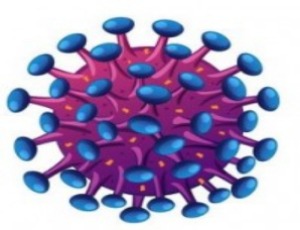
The Performance of a New Multidimensional Frailty Index in Comparison to the Frailty Phenotype to Assess Frailty in People Living with HIV 50 Years of Age and Older in an Urban HIV Clinic
Uzoamaka A. Eke, Katie Wasserstein, Carolyn Susman, Ahizechukwu C. Eke, Kareshma Mohanty, Sarah Schmalzle, Nicole Viviano, Jennifer D Hoffmann, Neha S. Pandit, Robyn Palmeiro, Judith Lee, Alice S Ryan, Kristen A. Stafford, Ann Gruber-Baldini
Background: Frailty is increasingly recognized in older people living with HIV (PLWH), but optimal diagnostics are yet to be determined. Frailty indices (FI) represent an accumulation of health deficits shown to correlate better with mortality and adverse effects of aging than the frailty phenotype or chronological age. Methods: This is a retrospective cohort study of frailty assessments in PLWH aged ≥ 50 years in a multidisciplinary urban HIV clinic. Frailty was assessed using Frailty Phenotype (FP) and a new 40-variable clinical composite FI derived from routine clinical and laboratory data (CCFI).
J AIDS HIV Treat, 2025, Volume Volume 7, Issue Issue 1, p27-37 | DOI: 10.33696/AIDS.7.058
- Abstract |
- Full Text |
- Cite |
- Supplementary File
HIV/AIDS Care and Support Services Satisfaction for Orphan and Vulnerable Children in Northwest Ethiopia: Mixed Method Study
Lakew Asmare, Zeamnuel Anteneh Yigzaw, Tihtna Alemu
Background: The provision of comprehensive care and support services to orphans and disadvantaged children that are individualized and tailored through the use of child- and family-centered information is critical but little if any information is available on satisfaction with HIV/AIDS care among orphans and vulnerable children in Gondar. Therefore, this study aimed to assess the satisfaction of HIV/AIDS care and support service delivered to caregivers of Orphans and Vulnerable Children, Gondar City, 2023.
J AIDS HIV Treat, 2024, Volume Volume 6, Issue Issue 1, p28-36 | DOI: 10.33696/AIDS.6.049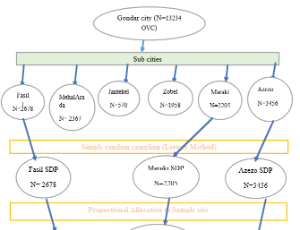
Metabolic Syndrome in HIV Infected Children Receiving Free HAART at a Centre of Excellence in HIV Care in Northern India
K. Rajeshwari, Chandrika Verma, Ranjan Neha, B. C. Koner, S. Anuradha
Implementation of Highly Active Antiretroviral Therapy (HAART) for patients with HIV has led to the dramatic reduction in AIDS related mortality in both children and adults [1]. With their longer life expectancy and improved quality of life, effects of ageing and other environmental factors are predisposing them to non-AIDS related morbidities, with cardiovascular diseases emerging as an important threat.
J AIDS HIV Treat, 2020, Volume Volume 2, Issue Issue 1, p30-36 | DOI: 10.33696//AIDS.2.004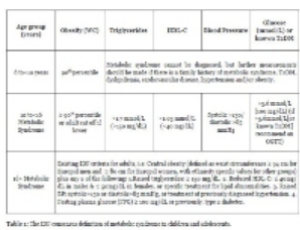
Patient Satisfaction and Perceptions Regarding Anti-Retroviral Therapy (ART) Services in Rural Southwestern Uganda
Amunyongire R, Nuwagaba E, Atuhaire J, Nduhuura E, Ndebiika A, Turyasingura O, Ntaro M, Rukundo GZ, Grace Nambozi
Patient satisfaction and perception of the healthcare services received contribute to compliance with treatment guidelines, retention in care, and adherence to recommendations. This is especially so in the treatment of chronic medical conditions such as HIV/AIDS. The success of antiretroviral therapy (ART) plays a fundamental role in determining the quality of life of people living with HIV/AIDS (PLWHAs).
J AIDS HIV Treat, 2022, Volume Volume 4, Issue Issue 1, p30-40 | DOI: 10.33696/AIDS.4.029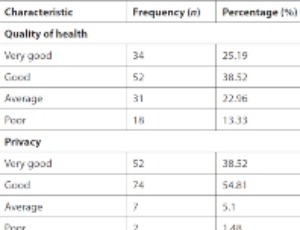
Fostemsavir in Heavily Treatment-Experienced Individuals Living with HIV-1: Insights from the Phase 3 BRIGHTE Study
Max Lataillade, Peter Ackerman, Till Schoofs, Andrew Clark, Michael Kozal
Fostemsavir (Rukobia™, ViiV Healthcare, Research Triangle Park, NC), a prodrug of the first-in-class attachment inhibitor temsavir, was developed to provide a much-needed new therapeutic option for heavily treatment-experienced (HTE) people living with HIV-1 (PLWH) who are unable to form a suppressive regimen from remaining viable antiretroviral (ARV) agents because of multidrug resistance, contraindications, prior intolerance, or other safety considerations.
J AIDS HIV Treat, 2021, Volume Volume 3, Issue Issue 2, p31-36 | DOI: 10.33696/AIDS.3.019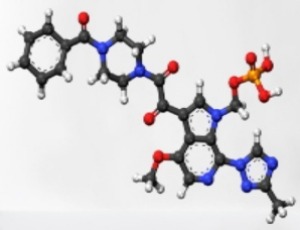
Health Workers’ Perspectives on the Outcomes, Enablers, and Barriers to the Implementation of HIV “Test and Treat” Guidelines in Abuja, Nigeria
Solomon Odafe, Kristen A. Stafford, Aliyu Gambo, Dennis Onotu, Mahesh Swaminathan, Ibrahim Dalhatu, Uzoma Ene, Oladipo Ademola, Ahmed Mukhtar, Ibrahim Ramat, Ehoche Akipu, Henry Debem, Andrew T. Boyd, Aboje Sunday, Bola Gobir, Man E. Charurat
HIV/AIDS continues to be a major public health disease accounting for 35 million deaths across the world. In 2016 alone, there were 1.8 million new HIV infections and 1 million deaths worldwide.
J AIDS HIV Treat, 2019, Volume Volume 1, Issue Issue 2, p33-45 | DOI: 10.33696/AIDS.1.007
A Longitudinal Assessment of Interruptions in HIV Clinic Visits and Virologic Failure among Pregnant and Postpartum Women in the Kabeho Study
Eric W. Nawar, Katherine M Andrinopoulos, Rhoderick N Machekano, Thomas W Carton, Emily A Bobrow, Placidie Mugwaneza, Dieudonne Ndatimana
Antiretroviral therapy (ART) for women with HIV is recommended for life, yet most studies measure retention in HIV care and treatment as a binary outcome rather than patterns of intermittent clinic attendance. Pregnancy and the post-partum period are critical times to study interruptions in care, as retention among these women is particularly challenging and can affect the outcomes of both the mother and her child.
J AIDS HIV Treat, 2023, Volume Volume 5, Issue Issue 1, p34-40 | DOI: 10.33696/AIDS.5.044
Unveiling an Atypical Response to HIV-1 Infection by the Patient Carrier of the Beta-S Globin Gene and Duffy Antigen Gene Double Mutation
Philomène Lungu Anzwal, Michel Balaka Ekwalanga, Athy Kalumba Kambote, Jeanne Kasali, Hippolyte Situakibanza, Jean-Paul Gonzalez
It is known and well documented that genetic selective pressures occur from Plasmodium falciparum, P. vivax or P. knowlesi infection of red blood cells, such led to the selection of their cell membrane antigens, hemoglobin and enzymes thus associated to several mutation including, among others.
J AIDS HIV Treat, 2020, Volume Volume 2, Issue Issue 1, p37-41 | DOI: 10.33696//AIDS.2.005
Toward Personalized Medicine for HIV/AIDS
Carla M. Kumbale, Eberhard O. Voit
In 2019, approximately 38 million people were infected with HIV worldwide [1]. Although there is still no cure that successfully eradicates the disease, combination antiretroviral therapy (cART) has improved to a point where undetectable viral loads have become achievable and HIV carriers often live almost normal lives with very substantially increased average life expectancies compared to historical data.
J AIDS HIV Treat, 2021, Volume Volume 3, Issue Issue 2, p37-41 | DOI: 10.33696/AIDS.3.020
Magnitude of HIV Index Case Testing among HIV Positive Clients Attending ART Clinic in University of Gondar Comprehensive Specialized Hospital, Northwest Ethiopia, 2023
Lakew Asmare, Zeamnuel Anteneh Yigzaw, Tihtna Alemu
Background: Index case testing is the provision of HIV testing services to family members or sexual partners of individuals already diagnosed with HIV. Its promotion stems from its potential to detect new cases, improve testing coverage, enhance ART retention, and provide convenience to affected families. Although evidence on index case testing in Ethiopia, particularly in the study area, is lacking, even, it is regarded as a crucial strategy for reducing HIV transmission among those unaware of their HIV status.
J AIDS HIV Treat, 2024, Volume Volume 6, Issue Issue 1, p37-43 | DOI: 10.33696/AIDS.6.050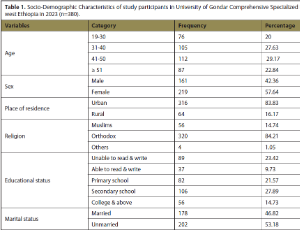
Creating HOPE: The Development of the HIV, Opioids and Pain Experience (HOPE) Screening Tool
Maria Anjanette Nuñez, Catherine Cronin, Ford J, Maya Fleischer, Wu Y, Erin Reardon, Sara Pullen
Background: People living with HIV (PLWH) are more likely to experience chronic pain, trauma, and analgesic use than their HIV-negative counterparts. This complex chronic pain profile can have subsequent physical, mental, and psychological sequela. Despite this, a tool to rapidly screen at risk patients and refer to specialized care has not been established. The purpose of this scoping review is to identify current screening tools for chronic pain, trauma, and opioid use to guide design of our comprehensive HOPE (HIV, Opioids and Pain Experience) screening tool.
J AIDS HIV Treat, 2025, Volume Volume 7, Issue Issue 1, p38-46 | DOI: 10.33696/AIDS.7.059
- Abstract |
- Full Text |
- Cite |
- Supplementary File
STI Characterization in Two U.S. Veterans Health Administration Healthcare Facilities During the Early COVID-19 Pandemic
Omar Harfouch, Emily Comstock, Katherine Sittig, Rohit Talwani, Roman Kaplan, Debra Benator, Heather Rivasplata, Eleanor Wilson
This retrospective chart review of Veterans at the Maryland and Washington, D.C. VA Medical Centers showed that STI positivity ratios increased in 2020 (2018-2020). The disparity in STI risk between Black and White Veterans widened in 2020, highlighting the need for targeted evidence-based STI prevention following the COVID-19 pandemic.
J AIDS HIV Treat, 2023, Volume Volume 5, Issue Issue 1, p41-45 | DOI: 10.33696/AIDS.5.045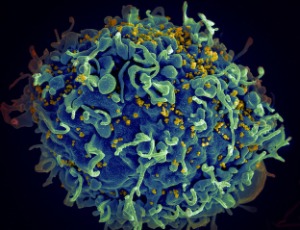
High Levels of Pre-Treatment HIV Drug Resistance in Zimbabwe: Is this a Threat to HIV/AIDS Control?
Vinie Kouamou, Alan M McGregor
Zimbabwe is one of the countries in Southern Africa most affected by the Human Immunodeficiency Virus (HIV) epidemic. The country has the third highest HIV prevalence (12.5% among 15-49 years) in the region, with an estimated 1.4 million people living with HIV (PLHIV) to date.
J AIDS HIV Treat, 2021, Volume Volume 3, Issue Issue 3, p42-45 | DOI: 10.33696/AIDS.3.021
Older Versus Younger Men Who Have Sex with Men: Awareness of and Potential Barriers to the Use of Pre-Exposure Prophylaxis (PrEP) Medication to Prevent the Transmission of HIV
Hugh Klein, Thomas Alex Washington
Men who have sex with other men (MSM) comprise the single largest group of individuals contracting HIV in the United States, accounting for more than one-half of all new HIV diagnoses.
J AIDS HIV Treat, 2020, Volume Volume 2, Issue Issue 2, p42-50 | DOI: 10.33696/AIDS.2.006
Bending the Curve Through Innovations to Overcome Persistent Obstacles in HIV Prevention and Treatment
Tamer A. Addissouky, Ibrahim El Tantawy El Sayed, Majeed M. A. Ali, Mahmood Hasen Shuhata Alubiady, Yuliang Wang
Background: HIV/AIDS remains a major global public health challenge despite significant progress in treatment. New infections and HIV-related deaths persist, fueled by disparities in prevention and care access. Purpose: This review synthesizes recent advances across key domains - from vaccine development to novel treatments to omics approaches – that collectively hold promise for ending the HIV/AIDS pandemic.
J AIDS HIV Treat, 2024, Volume Volume 6, Issue Issue 1, p44-53 | DOI: 10.33696/AIDS.6.051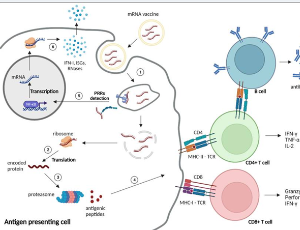
Brain Organoids: An Emerging Model System to Study HIV-1 Neuropathogenesis
Roberta S. dos Reis, Velpandi Ayyavoo
Chronic Human Immunodeficiency Virus (HIV-1) infection in the brain results in mild cognitive, motor and sensory deficits in more than 50% of people living with HIV-1 (PLWH), despite systemic viral suppression.
J AIDS HIV Treat, 2021, Volume Volume 3, Issue Issue 3, p46-48 | DOI: 10.33696/AIDS.3.022
Painful to Discuss: The Intersection of Chronic Pain, Mental Health, and Analgesic Use among People with HIV
Sara D. Pullen, Maria Anjanette Nuñez, Sydney Bennett, Wellsley Brown, Catherine Cronin, Maya Fleischer, Abigail Malcolm, Vijay Ramesh, Kayla Spencer
This retrospective chart review study aims to identify patients in an HIV clinical setting in an area of high HIV prevalence in Atlanta, Georgia, USA who have chronic pain, analgesic prescriptions, and/or mental health diagnoses.
J AIDS HIV Treat, 2023, Volume Volume 5, Issue Issue 1, p46-53 | DOI: 10.33696/AIDS.5.046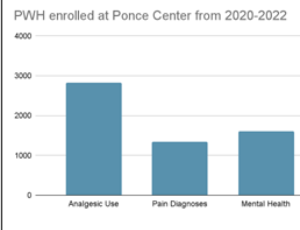
- Abstract |
- Full Text |
- Cite |
- Supplementary File
HIV-1 Treatment Failure among Population Taking Antiretroviral Therapy in Ethiopia
Yimam Getaneh, Atsbeha G Egziabhier, Kidist Zealiyas, Rahel Tilahun, Mulu Girma, Gebremedihin G/Michael, Tekalign Deressa, Ebba Abate, Desta Kassa, Yibeltal Assefa
For more than 35 years, the world has grappled with an AIDS epidemic that has claimed an estimated 35.0 million [28.9 million-41.5 million] lives and at its peak threatened global stability and security.
J AIDS HIV Treat, 2019, Volume Volume 1, Issue Issue 2, p46-57 | DOI: 10.33696/AIDS.1.008
Socio-Demographic Characteristics of Newly Diagnosed People Living with HIV Initiating Antiretroviral Treatment at the Adult Day Hospital of Bobo-Dioulasso Over a Five-year Period
Yacouba Sawadogo, Mafama Siribié, Aicha Savadogo, Hayazouma Hadiaratou Inès Hakiekou, Jessica Julie Chantal Samba, Noutin Fernand Michodigni, Cheick Ahmed Ouattara, Jacques Zoungrana, Armel Poda, Abdoul-Salam Ouédraogo
Background: HIV infection is a major public health problem in sub-Saharan Africa, particularly in Burkina Faso. This study aimed to describe the socio-demographic characteristics of newly person living with HIV initiating antiretroviral treatment at the Adult Day Hospital of Bobo-Dioulasso over a five-year period. Materials and methods: A descriptive cross-sectional study was conducted from 1 January 2016 to 31 December 2020 at the Adult Day Hospital of Bobo-Dioulasso. People newly diagnosed with HIV after confirmatory testing and initiating antiretroviral therapy were included in this study.
J AIDS HIV Treat, 2025, Volume Volume 7, Issue Issue 1, p47-53 | DOI: 10.33696/AIDS.7.060
Apigenin as Anti-TNF Alpha Agent
Tania Mulherkar, Rashida Ginwala, Zafar K. Khan, Pooja Jai n
Inflammatory responses, although effective in eliminating pathogens, are also associated with many diseases including asthma, chronic inflammatory diseases, atherosclerosis, cancer, diabetes, and autoimmune and degenerative diseases.
J AIDS HIV Treat, 2021, Volume Volume 3, Issue Issue 3, p49-53 | DOI: 10.33696/AIDS.3.023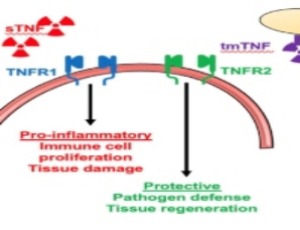
Trend of HIV Infection in a Specialized Medical Unit, 2007- 2016
Diana Iveth Rojas Terrazas, Jorge Duque Rodríguez, María Cecilia Ishida Gutíerrez, Estefani Calderón Avilés, Krissel García Hernández
The human immunodeficiency virus (HIV) has caused one of the pandemics that has most affected the world population [1], and continues to be a serious problem, since to date it has not been possible to eradicate or prevent totally new cases.
J AIDS HIV Treat, 2020, Volume Volume 2, Issue Issue 2, p51-56 | DOI: 10.33696/AIDS.2.007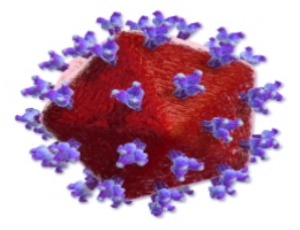
The Complex Intersection of Gender-based Violence (GBV) and HIV Infection: To Understand Beyond the Obvious
Vandana Dabla
The Gender-Based Violence (GBV) and HIV/AIDS are two significant social and public health issues that intersect in a rather complex way affecting women. GBV- going beyond the physical violence, includes emotional, social and economic violence too. While GBV increases the risk of contracting HIV, being suffering from HIV infection heighten the risk of experiencing GBV.
J AIDS HIV Treat, 2024, Volume Volume 6, Issue Issue 1, p54-55 | DOI: 10.33696/AIDS.6.052
The Outcome of Operation Triple Zero Clubs on Viral Load Outcomes among Adolescents Living with HIV: An Interventional Study of ICHSSA-2 Project in Lagos State
Felix N. Iwuala, Elijah O. Idoko, Doreen Magaji, Esther O. Brodrick-Shehu, Inioluwa O. Johnson, Ayotunde Akinwumi-Omidiji, Olakunle Osinowo, Ayokanmi J. Mobereade, Gbadegesin O. Alawode, Chika Obiora-Okafo, Moses Katbi, Jemeh Pius, Tosin Idaboh, Omosalewa Oyelaran, Bayo M. Onimode, Olugbenga Asaolu, Ughwereoghene K. Omo-Emmanuel
In Nigeria, the total number of AIDS-related deaths among children and adolescents was 16,200 in 2020. The Integrated Child Health and Social Services Award 2 (ICHSSA-2) project supports Operation Triple Zero (OTZ) clubs in 13 health facilities in Lagos State with support from PEPFAR through the United States Agency for International Development (USAID). The initiative aimed at ensuring zero missed appointments, zero missed drugs, and zero viral load among adolescents living with HIV (ALHIV).
J AIDS HIV Treat, 2025, Volume Volume 7, Issue Issue 1, p54-64 | DOI: 10.33696/AIDS.7.061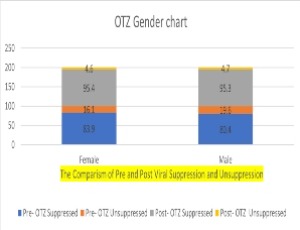
Plant-Based Vaccines Against Infectious Human Viral Diseases: Spotlight on HIV Vaccines
Srividhya Venkataraman
Production of high value recombinant pharmaceuticals using plant-based systems, otherwise called molecular pharming has greatly advanced over the past few years.
J AIDS HIV Treat, 2021, Volume Volume 3, Issue Issue 3, p54-68 | DOI: 10.33696/AIDS.3.024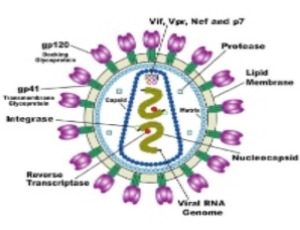
HIV Prevalence and Associated Risk Factors among Female Bar Waitresses in Bobo-Dioulasso, Burkina Faso
Wilfried Wenceslas Bazié, Tiandiogo Isidore Traoré, Anselme Sanon, Souleymane Tassembedo, Adjara Millogo, Ajani Ousmane Taofiki, Yvette Zoundi, Issouf Konaté
In Burkina Faso, despite the decline in HIV prevalence to below 1% in the general population since 2013, it remains high among key populations composed primarily of female sex workers (FSWs). FSWs are a heterogeneous group with various risks and practices. Within this composite group, less attention has been paid to female bar waitresses (FBWs). We conducted a cross-sectional study to investigate HIV prevalence and associated factors among FBWs in Bobo-Dioulasso.
J AIDS HIV Treat, 2024, Volume Volume 6, Issue Issue 1, p56-64 | DOI: 10.33696/AIDS.6.053
AIDS Related Histoplasmosis, Treatment and Prophylaxis: the Mycology Unit of FJ Muniz Hospital Experience
Fernando A Messina, Ricardo Negroni, María de las Mercedes Romero, María Gabriela Santiso
Classic histoplasmosis is a systemic endemic mycosis due to the dimorphic fungus Histoplasma capsulatum var. capsulatum. This microorganism lives as mold in rich nitrogen soil in temperate and humid regions.
J AIDS HIV Treat, 2020, Volume Volume 2, Issue Issue 2, p57-62 | DOI: 10.33696/AIDS.2.008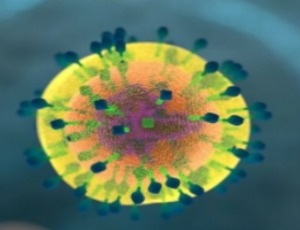
Rate and Predictors of Treatment Failure among Pediatric Population Taking Highly Active Antiretroviral Therapy in Ethiopia
Yimam Getaneh, Ajanaw Yizengaw, Agajie Likie, Mulusew Getahun, Altaye Feleke, Eleni Kidane, Achmyeleh Mulugeta, Amelework Yilma, Tezera Moshago, Yibeltal Assefa, Yiming Shao
The global scaling up of treatment and care for people living with Human Immunodeficiency Virus (PLHIV) has led to a 43% decline in new HIV pediatric infections since 2003, with 330,000 newly infected children in 2011.
J AIDS HIV Treat, 2019, Volume Volume 1, Issue Issue 2, p58-68 | DOI: 10.33696/AIDS.1.009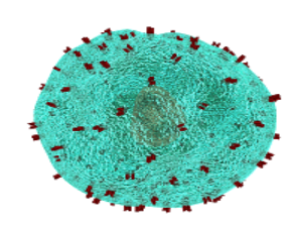
Anaphylaxis Drug Reaction after Initiation of Bictegravir
Blake Max, LaToyia Roman, Jonathan Martin, Patricia DeMarais
A 44-year old Ethiopian female with a history of HIV and latent tuberculosis treated with three months of rifampin presented to the Ruth M Rothstein CORE Center complaining of pruritic rash that started the previous night.
J AIDS HIV Treat, 2020, Volume Volume 2, Issue Issue 2, p63-67 | DOI: 10.33696/AIDS.2.009
Epidemiological, Clinical, Therapeutic and Evolutionary Profile of HIV-infected Patients Monitored at the Center of Excellence of the University of Lubumbashi
Philomène Lungu Anzwal, Dodo Manda Mukendi, Odon Panshi Wa Panshi, Athy Kalumba Kambote, Nathalie Mbuyamba Mutombo, Astrid Lokotshe Kanyama, Jirène Ndibu Ebondo, Salvatrice Masonga Madika, Franck Kasans Tshinyengo, Julie Ilunga, Mbelu Dina, Gloria Malitele Babile, Guy Kandja Lwamba, Eric Ngindu Mankoy, Odile Latshupanda Ampeng, Elie Kabika Yatambo, David Elo Lombe, Djo Banza Monga, Laurent Shamashanga Kwete, Jérôme Nyembo Lukamba, Tony Kayembe Kitenge
Introduction: HIV infection is characterized by the progressive destruction of CD4+ T lymphocytes, responsible for an immune deficiency, thus promoting the development of serious opportunistic infections and tumors. Aim: The objective of this study was to describe the epidemiological, clinical, therapeutic, and disease progression of HIV-infected patients registered and monitored at the Center of Excellence at the University of Lubumbashi. Methods: Retrospective descriptive study, carried out from 2006 to 2024 using patient records registered at the Center of Excellence.
J AIDS HIV Treat, 2025, Volume Volume 7, Issue Issue 1, p65-73 | DOI: 10.33696/AIDS.7.062
Immunological and Virological Characteristics of People Living with Human Immunodeficiency Virus on Antiretroviral Therapy in Bobo-Dioulasso Hospital, Burkina Faso
Suhaniwé Nina Pascaline Dakouo, Wilfried Wenceslas Bazié, Yacouba Sawadogo, Jacques Zoungrana, Arnaud Zougmoré, Firmin Nongodo Kaboré, Koiné Maxime Drabo, Armel Poda, Abdoul-Salam Ouédraogo
Human immunodeficiency virus infection remains a public health challenge, mostly in sub-Saharan Africa. This region accounts for 65% of those infected and contributes to 50% of new infections. The World Health Organization advocates for early antiretroviral therapy (ART) initiation for all newly diagnosed individuals. If monitoring viral load (VL) after ART initiation is increasingly common, baseline VL testing is under-utilized in resource-limited settings.
J AIDS HIV Treat, 2024, Volume Volume 6, Issue Issue 1, p65-75 | DOI: 10.33696/AIDS.6.054
Early Insights into COVID-19 in Persons Living with HIV and Cardiovascular Manifestations
Jelani K. Grant, Louis Vincent, Bertrand Ebner, Barry E. Hurwitz, Maria L. Alcaide, Claudia Martinez
At the end of 2019, a novel coronavirus was identified as the cause of a cluster of pneumonia cases in Wuhan, a city in the Hubei Province of China.
J AIDS HIV Treat, 2020, Volume Volume 2, Issue Issue 2, p68-74 | DOI: 10.33696/AIDS.2.010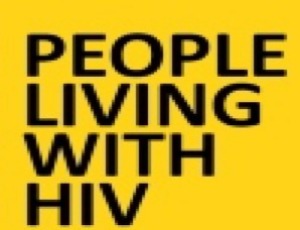
Development of an Ultrasensitive HIV-1 DNA Detection Assay Based on an Automated πCode End-Point PCR System
Kazuo Suzuki, Jui-Yu Hu, Takaomi Ishida, Yuhung Lin, Satoshi Minote, Zhixin Liu, Julie Yeung, Leon Patrick McNally, Mitchell Starr, Angelique Levert, Philip Cunningham, John Zaunders, Chin-Shiou Huang
Currently, around 60-75% of the HIV positive patients in developed countries on anti-retroviral therapy (ART) have undetectable plasma viral load using current diagnostic PCR assays.
J AIDS HIV Treat, 2019, Volume Volume 1, Issue Issue 2, p69-88 | DOI: 10.33696/AIDS.1.010
Routine HIV Screening Health Care Assessment in Primary Care in Outpatient Clinics at Southern Puerto Rico
Fabian Ramírez Rivera, Itzamar Pastrana Echevarría, Yolanda Hidalgo Hernández, María Valentín Mari, Paola Vidal Castillo, Stephen Bury Fiol, Carmen Reyes, Rafael Espinet Pérez
Background: Despite established guidelines recommending routine HIV screening for individuals aged 13 to 64 at least once in their lifetime, testing remains underutilized in many primary care settings. Puerto Rico faces a disproportionately high HIV burden, particularly in the southern region, yet limited data exist on screening adherence and patient awareness. This study aimed to evaluate the socio-demographic characteristics and sexual behaviors associated with routine HIV testing among adults in primary care clinics in southern Puerto Rico.
J AIDS HIV Treat, 2025, Volume Volume 7, Issue Issue 1, p74-80 | DOI: 10.33696/AIDS.7.063
Viral Load Suppression and Associated Factors among People Living with HIV on Antiretroviral Therapy in a Tertiary Health Institution in Owo, Southwest, Nigeria
Abiodun J. Kareem, Abel O. Alonge, Ifedayo O. Fasoranti, Adesola O. Kareem, Temitayo O. Bewaji, Akintunde O. Akinyugha, Ikechukwu S. Abazu, Korede O. Oluwatuyi, Babatunde D. Babalola, Olukemi C. Ilori, Victor O. Otor, Patricia I. Eniowo, Akinbowale R. Eniowo
Background: Suppression of Human Immuno-deficiency Virus (HIV) viral load (VL) is essential for preventing disease progression and improved quality of life in persons living with HIV (PLHIV). In 2023, Nigeria had an HIV prevalence rate of 2.1% while Ondo state was 1.1%. No prior characterization of the status of viral load suppression of PLHIV in the Owo, Ondo state has been undertaken. This study aimed to determine the predictors of viral load suppression among PLHIV in Owo, Ondo State, Nigeria.
J AIDS HIV Treat, 2025, Volume Volume 7, Issue Issue 1, p81-89 | DOI: 10.33696/AIDS.7.064
Beyond Viral Suppression: Navigating Structural Barriers, Aging and Frailty, Drug Resistance, Therapeutic Innovations, and Reproductive Health Challenges in the Global HIV/AIDS Epidemic
Ahizechukwu C. Eke, Uzoamaka A. Eke
HIV programs worldwide have achieved remarkable gains toward viral suppression, transforming HIV from a fatal illness into a chronic condition for many. Despite these successes, a substantial proportion of people living with HIV (PLWH) continue to face poor health outcomes that extend well beyond viral control. Persistent social determinants of health and structural barriers, including poverty, stigma, discrimination, and disrupted health systems, limit access to prevention, treatment, and retention in care.
J AIDS HIV Treat, 2025, Volume Volume 7, Issue Issue 1, p108-122 | DOI: 10.33696/AIDS.7.067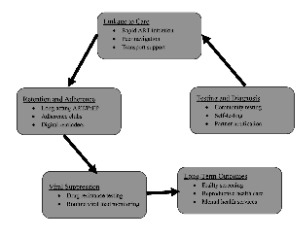
HIV-1 and Artificial Intelligence: From Molecular Insight to Population Impact
Giovannino Silvestri, Aditi Chatterjee
Artificial intelligence (AI) has become an indispensable ally in virology, enabling the analysis of enormous datasets that extend from viral genomes to behavioral and clinical information. HIV-1, a rapidly evolving retrovirus with extraordinary genetic diversity and a persistent latent reservoir, poses unique computational challenges that are now approachable through data-driven models.
J AIDS HIV Treat, Volume 7, Issue 1, p123-132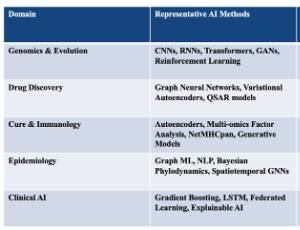
About Scientific Archives
Scientific Archives is a global publisher initiated with the mission of ensuring equal opportunity for accessing science to research community all over the world. Spreading research findings with great relevance to all channels without any barrier is our goal. We want to overcome the challenges of Open Access with ensured quality and transparency.
